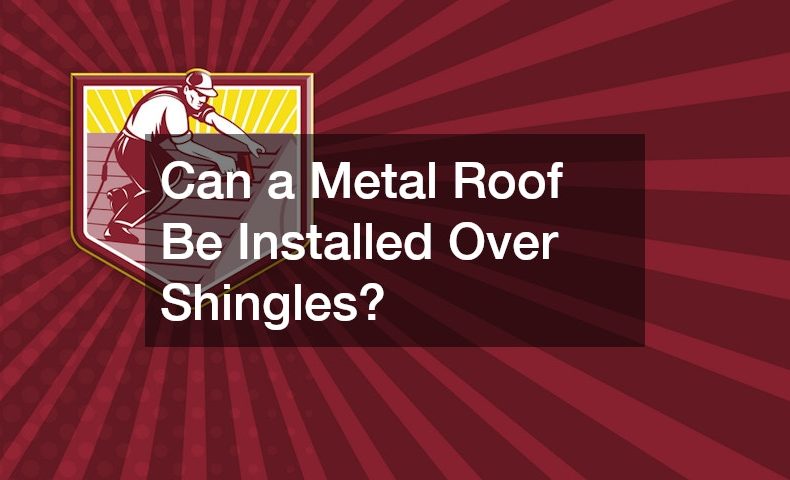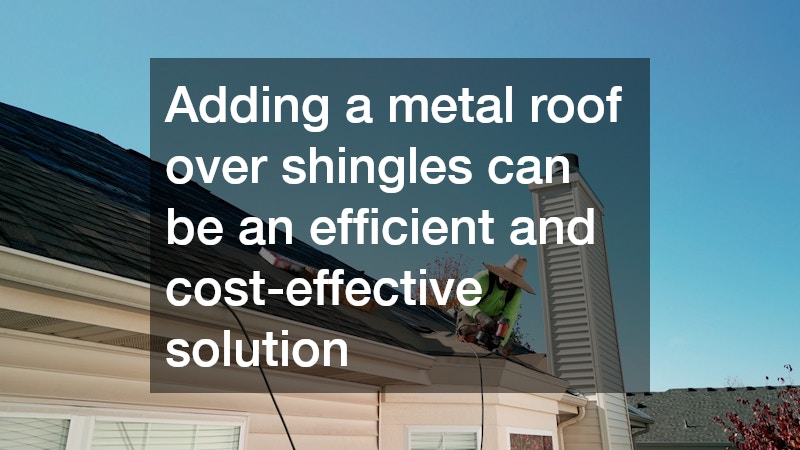
Can a Metal Roof Be Installed Over Shingles?
Metal roofs and shingles are two distinct types of roofing materials, each with their own set of advantages and disadvantages. Shingles are typically made from asphalt and are the most common roofing material in many regions due to their affordability and ease of installation. Metal roofs, on the other hand, are known for their durability, longevity, and, often, energy efficiency.
Understanding these basic characteristics is crucial when considering the installation of a metal roof over an existing shingle roof. The interplay of these materials needs careful consideration to maximize the benefits each offers.
The weight, durability, and reflective properties of metal roofs make them a popular choice for many homeowners looking for a long-term roofing solution. They can last up to 50 years or more with proper maintenance, compared to the 20-30 year lifespan of traditional shingle roofs. Moreover, the energy-efficient nature of metal roofs helps in reducing energy costs as the reflective surface deflects solar heat, keeping homes cooler in the summer. Conversely, shingle roofs require more maintenance, and their shorter lifespan means they will need to be replaced more frequently. As such, many homeowners consider overlaying a metal roof on their existing shingles to capitalize on these benefits.
Adding a metal roof over shingles can be an efficient and cost-effective solution, given that tearing off old shingles can be labor-intensive and costly. While some may be concerned about the additional weight, metal roofs are actually quite lightweight, which minimizes structural concerns. Still, it’s essential to ensure the existing roof structure is in good condition and can support the new material. A thorough inspection by a roofing specialist can provide peace of mind and address any underlying issues before overlay installation begins. Additionally, local building codes may dictate whether such an overlay is permissible or advisable, so that should be considered as well.
The Installation Process: Steps and Considerations
Installing a metal roof over shingles is a process that requires careful planning and execution. The first step involves evaluating the existing shingle roof to ensure it’s suitable for overlay. This includes checking for any signs of damage, such as leaks or rot, which would need to be repaired beforehand. If the underlying structure is deemed sound, the next step is to place an underlayment—a crucial layer that provides an additional barrier against moisture and enhances the overall lifespan of the roof. Proper underlayment ensures that any existing gaps or inconsistencies within the shingle layer do not affect the performance of the metal roofing.
Choosing the appropriate type of metal roof for your home is also a critical consideration. Various types include standing seam, corrugated metal panels, and metal shingles, each with unique installation requirements and aesthetic qualities. Factors such as climate, budget, and architectural style of the home should influence the choice of metal roofing. Additionally, selecting the right fasteners and sealants is crucial to guard against leaks and ensure the long-term integrity of the roof. This becomes particularly important when a metal roof is installed over shingles, as the added layer requires secure attachment.
The actual installation of metal roofing panels involves precision and attention to detail to ensure a snug fit and seamless appearance. Each panel must be aligned correctly to prevent gaps or overlaps that may compromise the roof’s performance. While some homeowners may consider a DIY approach, hiring a professional roofing contractor is often recommended to guarantee the job meets industry standards and local building regulations. Professional installers bring expertise and the necessary tools to handle unexpected challenges that may arise during installation. Moreover, a professional installation often comes with warranties that provide added assurance and protect your investment in the long run.
Benefits and Potential Drawbacks of Overlaying Metal Roofing
Overlaying a metal roof over shingles can offer many advantages, starting with cost savings. The ability to retain existing shingles means not having to pay for removal and disposal, which can be a substantial expense. This method also reduces construction debris, promoting a more environmentally friendly approach to roofing. In addition to financial savings, homeowners benefit from an insulated effect due to the dual-layer nature of the combined roof system. This can lead to improved energy efficiency, especially in homes situated in hot climates.
However, homeowners should also be aware of potential drawbacks when overlaying a metal roof over shingles. A primary concern is the ventilation; a poorly insulated roof can turn into an energy drain rather than an energy saver. It’s crucial to ensure that ventilation channels are maintained or enhanced during installation to prevent moisture buildup, which can lead to mold and mildew. Additionally, some local regulations or Homeowners Association (HOA) rules may have restrictions on overlaying roofs. Non-compliance could result in fines or the need for roof modification or removal.
Another consideration is that while metal roofs are durable, they are also typically more costly upfront than traditional shingle roofs. The initial investment might deter some homeowners who are not planning on staying in their home for an extended period. However, the long-term benefits often outweigh these initial costs, especially with energy savings and increased home value. A professional roofer can provide insights and a cost-benefit analysis specific to your situation, helping you make an informed decision. Regardless of the choice, proper maintenance and periodic inspections are key to ensuring a long-lasting, functional roof.
Deciding whether to install a metal roof over an existing shingle roof depends on numerous factors, including structural integrity, local building codes, and personal preferences. For many homeowners, the prospect of improved durability, energy efficiency, and aesthetics makes metal roofing an attractive option. Regardless of your decision, it is crucial to consult with professionals and consider all aspects of your home’s needs and the benefits that a metal roof can offer. Professional guidance ensures that the installation process is seamless and that your new roof will protect your home for years to come.
The choice to overlay a metal roof over existing shingles offers a unique opportunity to harness the benefits of both materials without excessive waste or cost. By avoiding the complete removal of the old roof, homeowners minimize environmental impact and construction costs while enjoying the modern appeal and functionality of metal roofing. Critically assessing your property’s current condition and engaging professional advice are vital steps in this decision-making process. Proper planning will not only meet local regulations but also align with your specific goals for enhancing your home’s value and efficiency.
Ultimately, a metal roof installed over shingles can be a wise investment for those seeking to improve their home’s performance and longevity. The combination of the strong visual appeal, energy efficiency, and reduced maintenance overheads makes metal an enduring choice. Whether or not to commit to this undertaking will largely depend on thorough research and professional consultation tailored to your property’s specific needs. With sound judgment and expert input, you can achieve a sustainable, aesthetically pleasing roofing solution that suits your lifestyle and budget.

You may also like
Calendar
| M | T | W | T | F | S | S |
|---|---|---|---|---|---|---|
| 1 | 2 | 3 | 4 | 5 | 6 | 7 |
| 8 | 9 | 10 | 11 | 12 | 13 | 14 |
| 15 | 16 | 17 | 18 | 19 | 20 | 21 |
| 22 | 23 | 24 | 25 | 26 | 27 | 28 |
| 29 | 30 | 31 | ||||
Leave a Reply